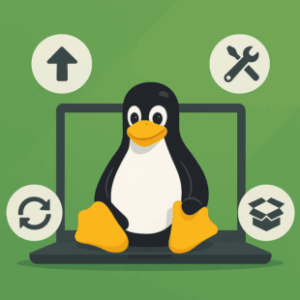What to Do After Installing Linux – 5 Most Important Steps (for All Major Distributions)

First thing – check and install all available updates.
In the graphical interface, you will usually find the “Update Manager”
Or use the terminal:
1. Update the system
Each distribution has its own method:
 Ubuntu, Mint, Debian, Zorin OS, MX Linux:
Ubuntu, Mint, Debian, Zorin OS, MX Linux:
sudo apt update && sudo apt upgrade Fedora, RHEL, CentOS:
Fedora, RHEL, CentOS:
sudo dnf update openSUSE:
openSUSE:
sudo zypper update Arch Linux, Manjaro:
Arch Linux, Manjaro:
sudo pacman -Syu
2. 💻 Check drivers
Graphics (NVIDIA), Wi-Fi or printers:
- Ubuntu/Mint/Zorin: tool “Driver Manager”
- Fedora/openSUSE/Arch: manual installation, e.g. package
nvidiaorbroadcom-wl - Or use:
lspci | grep -i vga
3. ▶️ Install codecs and multimedia players
- Ubuntu/Mint:
ubuntu-restricted-extras - Fedora:
rpmfusion-free-release, thenvlc,gstreamer-plugins - openSUSE: add the Packman repository, then
vlc-codecs,ffmpeg - Arch/Manjaro:
vlc,gstreamer,ffmpegfrom the repository
4. 🛠️ Install essential software
Distributions have different software managers:
- GUI: Software Center, Discover, GNOME Software, Synaptic
- Or via terminal:
sudo apt install vlc gimp libreoffice
(Or dnf, zypper, pacman depending on the distribution)
5. 💾 Backups
Important for everyone, regardless of the system.
- Timeshift – works well in Debian/Ubuntu systems, but can be installed elsewhere too.
- Déjà Dup – simple tool for backing up personal files
- rsync, Borg, Restic – more advanced options
